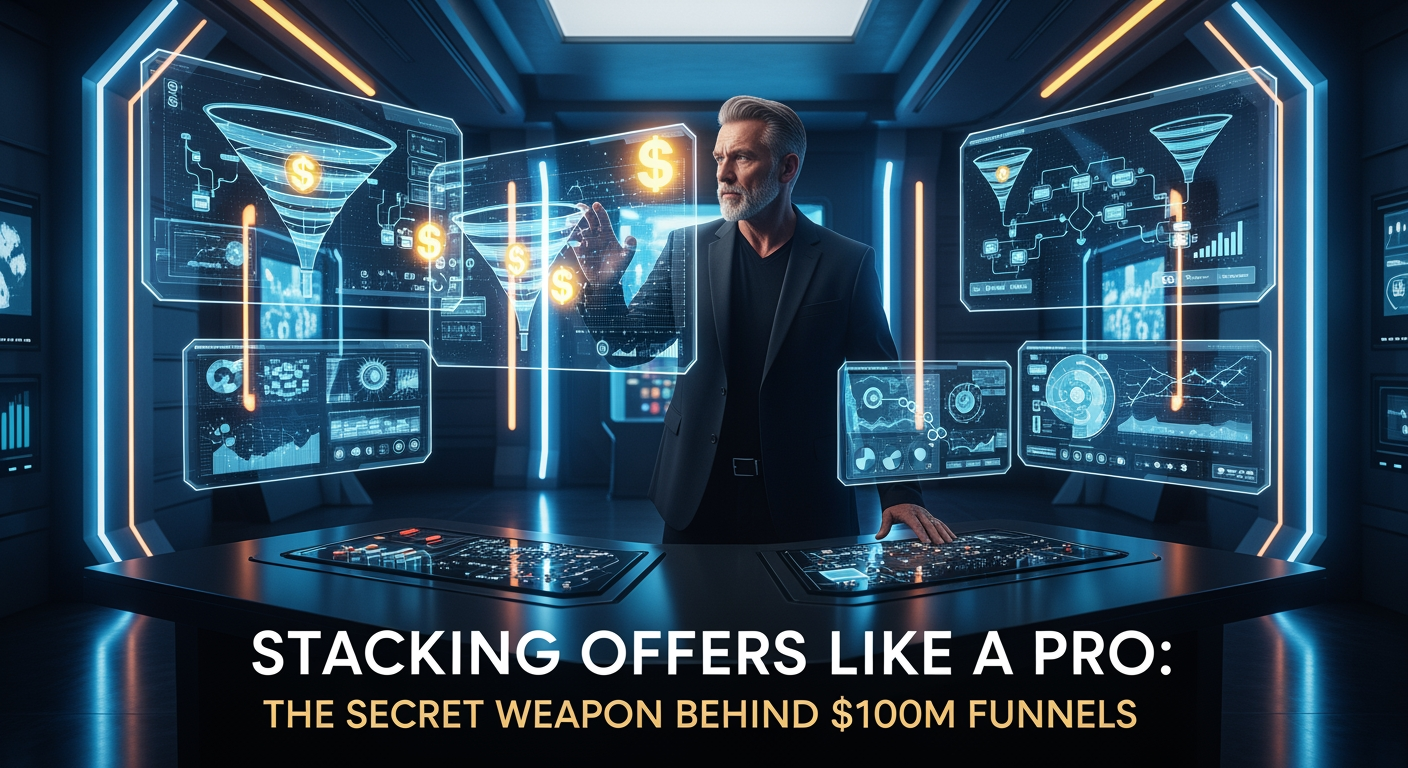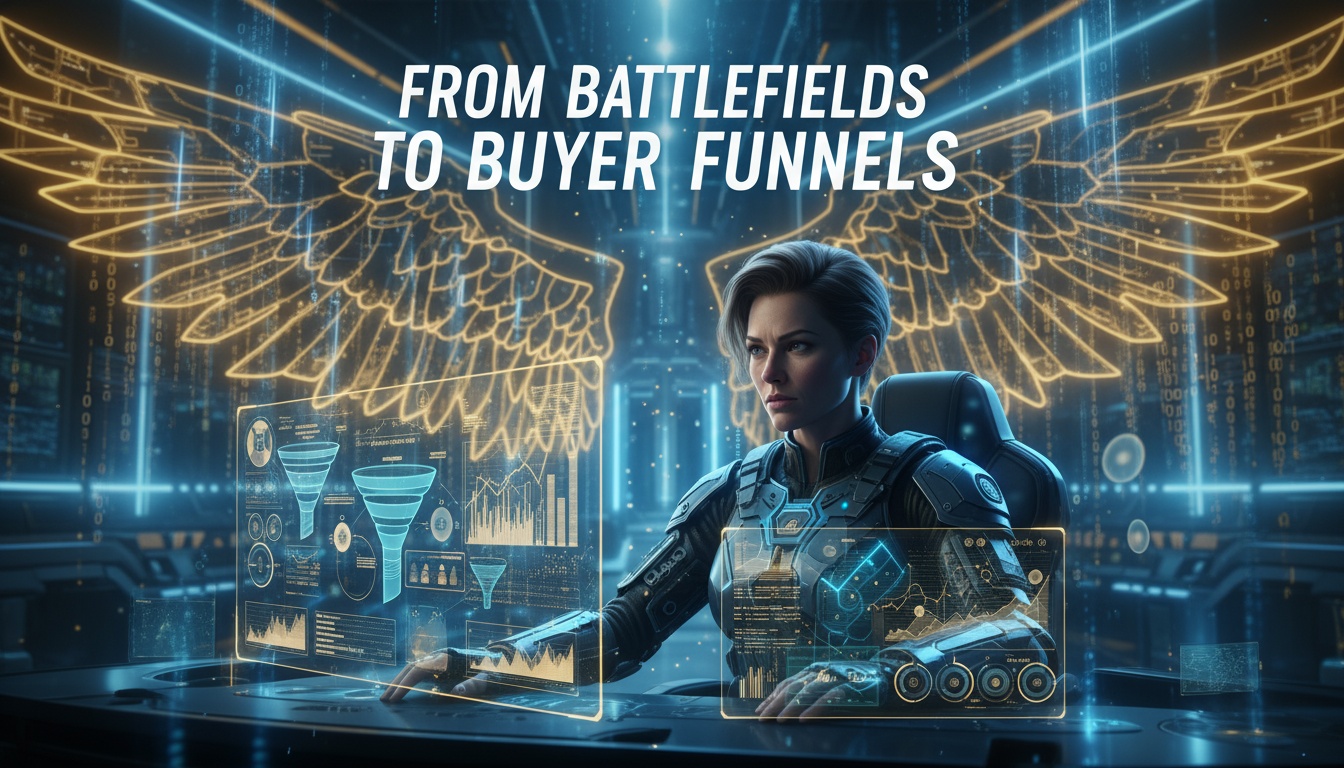The first time I realized my sales funnel was more like a leaky bucket than a profit machine, I was hunched over my laptop at midnight, icing a backache with a frozen bag of peas. That’s when I stumbled across Alex Hormozi’s fierce take on offer stacking. Suddenly, it made sense: what separates the ‘barely-getting-by’ from the ‘printing-cash-in-their-sleep’ crowd isn’t work ethic or luck. It’s the invisible, layered system of compelling offers—a mission-based approach where every phase builds momentum and, more importantly, customer loyalty. Let's delve deeper into the workings of these so-called $100M marketing funnels, revealing their inherent flaws and personality quirks.
Leaky Bucket Syndrome: Why Your Funnel Needs a Mission, Not Just Offers
Let me take you back to my first real attempt at building a marketing funnel. I’d spent weeks crafting what I thought was a killer offer—an online course packed with value, a slick landing page, and a checkout process smoother than butter. I hit “launch” and waited for the sales to roll in. And they did… for about three days. Then, nothing. My sales funnel was losing customers faster than I could attract new ones. Why? Like many others, I had constructed a bucket without a bottom. There was no next step, no mission, no momentum, just a dead- end.
This condition is what I call Leaky Bucket Syndrome. It silently destroys most marketing funnel aspirations. Without a mission-based marketing approach, you may attract people, but they will quickly leave. I learned (the hard way) that the best sales funnel stages aren’t about stacking random offers—they’re about guiding your customer through a mission, one phase at a time.
The Mission-Map Framework: Funnel Phases as Military Ops
Think of your funnel like a military campaign. Each phase has a clear objective, and every offer is a mission-critical step. Here’s how I map it:
Recruit: Attract leads with a free offer or irresistible lead magnet. This is your frontline—removing the first barrier and building trust.
Equip: Deliver a core offer that solves a painful problem and gives your customer the tools or knowledge they need. This is where you stack relief and value, not just features.
Deploy: Introduce a high-ticket or advanced offer—coaching, done-for-you services, or certifications. You’re helping your customer take action and level up.
Reinforce: Offer continuity—memberships, subscriptions, or recurring toolkits. This is your automation phase, where momentum and engagement compound quietly in the background.
Alex Hormozi nails it:
“Every great business solves a painful problem, then immediately offers the next logical step.”
If you stop at one offer, your funnel is just a bucket with holes. But when you stack each phase—recruit, equip, deploy, reinforce—you create a customer journey that builds both profit and impact.
Stacking Relief, Value, and Momentum
Here’s the real insight: In 2025, offer stacking strategies are not merely about adding bonuses without purpose. They’re about layering solutions that anticipate your customer’s next struggle, increasing perceived value, and closing sales effectively. Each stage should feel like a survival kit—solving the next problem before your customer even knows they have it.
Mission-based marketing approaches align your funnel with your customer’s values and long-term goals. It’s not just about making another sale; it’s about building trust and engagement that lasts. When your offers are mapped to a mission, you don’t just plug leaks—you turn your funnel into a growth engine.
If you’re tired of watching leads slip away, remember: the best customer engagement strategies are built on missions, not just offers. Stack your value, guide your customer, and watch your funnel hold water—and profits—for the long haul.
The Relentless Power of Value Ladders (Even If You’re Not Russell Brunson)
Let me be honest: my first big offer was a disaster. I thought if I just “threw it all in”—every bonus, every module, every shiny add-on—people would be lining up to buy. Instead, I received no response. That’s when I stumbled across Russell Brunson’s Expert Secrets and the concept of Value Ladder Marketing. Suddenly, it clicked: it’s not about overwhelming people with everything at once. It’s about guiding them, step by step, up a ladder of value—each rung solving a new problem and building trust.
Why "Throw It All In" Offers Fail While Value Ladders Succeed
When you dump everything into one mega-offer, you confuse your audience. They don’t know where to start, what’s most important, or if it’s even for them. The Value Ladder fixes these problems by breaking your customer journey into clear, logical steps:
Lead Magnet (Frontline Offer): Free, solves one urgent barrier, and builds trust.
Core Offer: $97–$997, delivers a transformation (course, system, or challenge).
High-Ticket Offer: $1K+, deep coaching, done-for-you, or certification.
Continuity Offer: $47–$197/month, recurring membership or toolkit.
“You start with a free lead magnet (something easy to say yes to), then guide your audience up the ladder — from free to paid, from entry-level to elite, from curious visitor to raving customer.” — Russell Brunson
Lead Magnet Creation Tips: Micro-Wins Build Trust
Here’s a quick story: I once gave away a simple toolkit as a lead magnet. It wasn’t just “free stuff”—it was a targeted solution to a nagging problem my audience faced. The result? My email open rates doubled overnight. That’s the secret: lead magnets aren’t about volume—they’re about micro-wins that prime your audience for the next step. If you want to nurture qualified leads, solve one specific, urgent problem and make it easy to say yes.
Core Offer Pricing Strategies & High-Ticket Offer Examples
Once your lead magnet delivers, your core offer becomes the next logical step. Think $97–$997 for a course, system, or challenge that promises a clear transformation. Don’t underprice—if your offer changes lives, price it like it matters. For high-ticket offers, aim for $1,000 and up. This could be group coaching, a done-for-you service, or a certification program. These offers aren’t just about revenue—they’re about deepening the relationship and delivering massive value.
Recurring Income Business Models: The Compound Effect
Here’s where the magic happens: continuity offers. Think memberships, subscriptions, or recurring toolkits ($47–$197/month). This type of product is the “quiet sniper” of the value ladder—recurring income that compounds in the background. ClickFunnels success stories are built on this: a lead magnet brings people in, a core offer transforms, a high-ticket offer elevates, and continuity keeps the relationship (and revenue) alive.
The real secret? Each offer solves a pain point, delivers immediate value, and creates curiosity for the next step. That’s how you build a $100M funnel—one rung at a time.
Automation: The Quiet Sniper That Keeps Income Flowing (Even on Sundays)
Allow me to explain how weekend automation in sales funnels has become my indispensable tool. Picture this: I’m chasing my toddler through the backyard, phone nowhere in sight, and my funnel is quietly working overtime. By Sunday night, I checked my dashboard—three new sales, two continuity signups, and a handful of warm leads ready for follow-up. I didn’t send a single email or hop on a call. That’s the magic of sales funnel automation.
Why Funnel Automation Acts Like a Night-Shift Team That Never Requires Overtime Pay
I used to think I had to be "on" all the time—answering every DM, following up with every lead, and manually moving people through my But automation in sales funnels changed the game. It’s like having a night-shift team that never sleeps, never asks for a raise, and always shows up. While I’m living my life, my funnel is nurturing leads, scoring prospects, and stacking value at every step.
Stacking Automation: Turning ‘Maybe’ Leads Into Die-Hard Customers
Here’s how I stack automation inside my full-funnel marketing strategy:
Email Sequences: Every new lead gets a tailored welcome series—delivering instant value, building trust, and introducing my core offer.
Lead Scoring: My system tracks engagement (opens, clicks, and downloads) and automatically segments leads based on their behavior. Hot leads get fast-tracked to my high-ticket offer; colder leads get more nurturing.
Segmentation: I use tags and triggers to send the right message at the right time—no more “spray and pray.” This is customer lifetime value optimization in action.
The result? Even the “maybe” leads—the ones who ghosted my first offer—get gently nudged back into the funnel with irresistible value. Over time, these automations turn fence-sitters into raving fans and recurring buyers.
Continuity Offers: The Recurring Income Business Model That Never Clocks Out
If you want predictable, scalable revenue, continuity offers are your best friend. My membership runs at $97/month. Whether I’m working, sleeping, or wrangling kids, those payments hit my account like clockwork. As Hormozi says:
“Continuity is the quiet sniper — recurring income that compounds quietly in the background.”
Automation makes such payments possible. From onboarding emails to monthly content drops, everything is set up once and runs forever. That’s the beauty of a recurring income business model powered by automation.
OfferLab: Your Command Center for Automated Lead Nurturing Strategies
Inside OfferLab, I build, launch, and automate every phase of my value ladder. With email marketing automation, lead nurturing strategies, and seamless upsell flows, my funnel never takes a day off. This is how you maximize customer lifetime value and keep income flowing—even on Sundays.
Automation isn’t just a tool; it’s the backbone of a full-funnel marketing strategy. It’s how you go from hustling for every sale to building a system that works for you, 24/7.
Wild Card: If I Had to Start Over, Here’s the Offer Stack Playbook I’d Ignore (and Master)
Let's be frank for a moment. If you look at most “successful” online entrepreneurs, you’ll see the same pattern: they obsess over their core offer (the $97–$997 course, challenge, or system) and stop there. I know, because I did it—twice. I poured my soul into building transformational products, hustled for every sale, and celebrated every launch. But here’s the cold truth: I was copying the middle of the playbook, not the $100M funnel techniques that actually build wealth and freedom.
What I missed—and what most people miss—is the perpetual power of stacking high-ticket and continuity offers. The real profit and impact don’t come from the core offer. They come from what happens next: the high-ticket transformation (coaching, done-for-you, certification) and the recurring revenue machine (memberships, subscriptions, toolkits). That’s the backbone of every $100M funnel, and it’s the foundation of the OfferLab Certification Program’s approach to offer stacking strategies.
If I had to start over today, I’d flip the script. Instead of sweating over “just another launch,” I’d build backwards from recurring revenue. I’d ask, “How can I create a continuity offer so valuable people never want to leave?” Then, I would automate every layer of the system so that it continues to function even in my absence. No more launch fatigue. No more chasing one-off sales. Just a seamless, automated offer ecosystem that compounds value and income month after month.
Let’s get hypothetical. Imagine you forced me to launch with $100 and zero email lists. Here’s my two-week Value Ladder hack, inspired by OfferLab’s transformational product development secrets:
First, I’d craft a laser-focused lead magnet that solves a tiny, urgent pain point—something so specific it’s impossible to ignore. I’d run $50 in ads to get my first 100 leads. Next, I’d invite them to a live mini-workshop (my core offer) for $47, promising a quick win and a peek behind the curtain. Here’s the trick I learned from OfferLab: during the workshop, I’d reveal the “next step” is a high-ticket group sprint—limited seats, high-touch, real results. Then, before the workshop ends, I’d offer a founding member spot in my continuity program (think: ongoing support, resources, community) at a no-brainer price. The final $50 goes to retargeting those who didn’t buy on the spot.
That’s it. In two weeks, I’ve stacked the entire Value Ladder—lead magnet, core offer, high-ticket, and continuity—without a list, a team, or a massive budget. And because I built it with automation in mind, every new customer gets guided up the ladder, step by step, without me having to manually push them.
If you’re tired of the launch grind and want to build a true offer ecosystem, learn from my mistakes: don’t just copy the core offer. Master the art of stacking high-ticket and continuity offers, and automate every phase. Programs like OfferLab Certification don’t just teach you what to sell—they show you how to build, stack, and automate offers so your income never clocks out. That’s the real $100M funnel technique. And if I had to start over, it’s the only playbook I’d follow—messy, unfiltered, and proven in the trenches.



